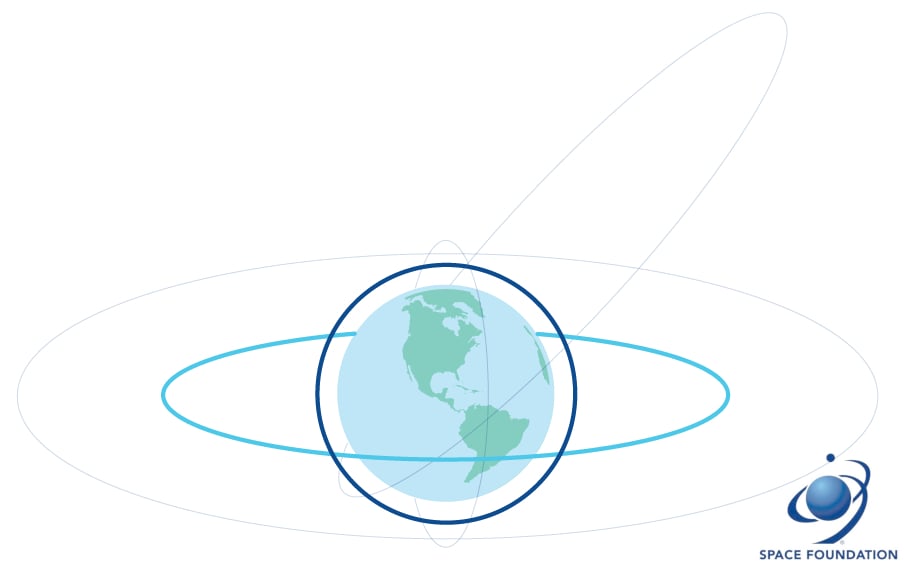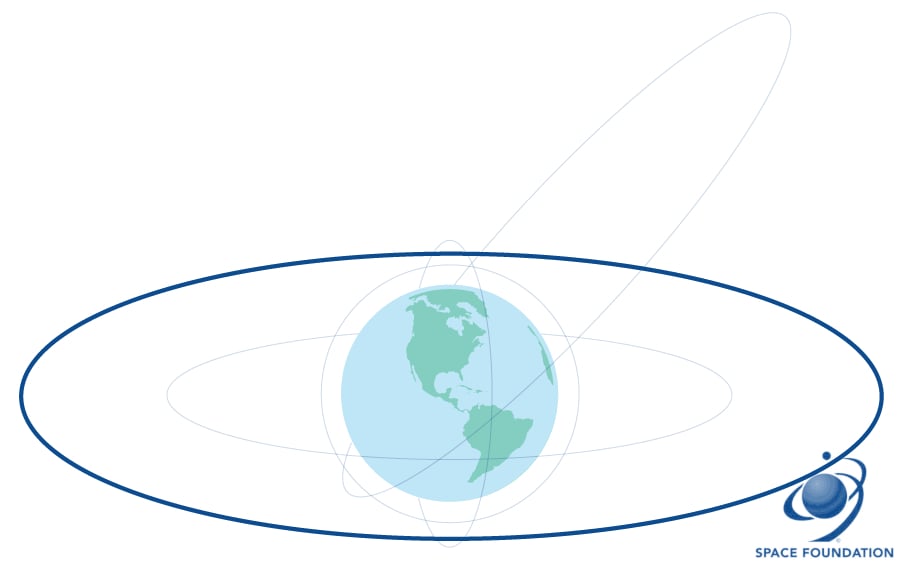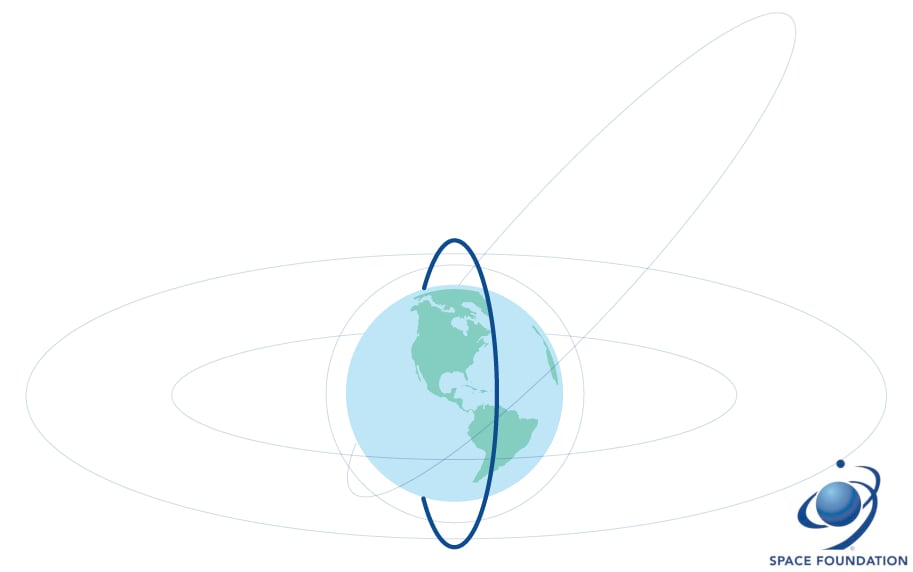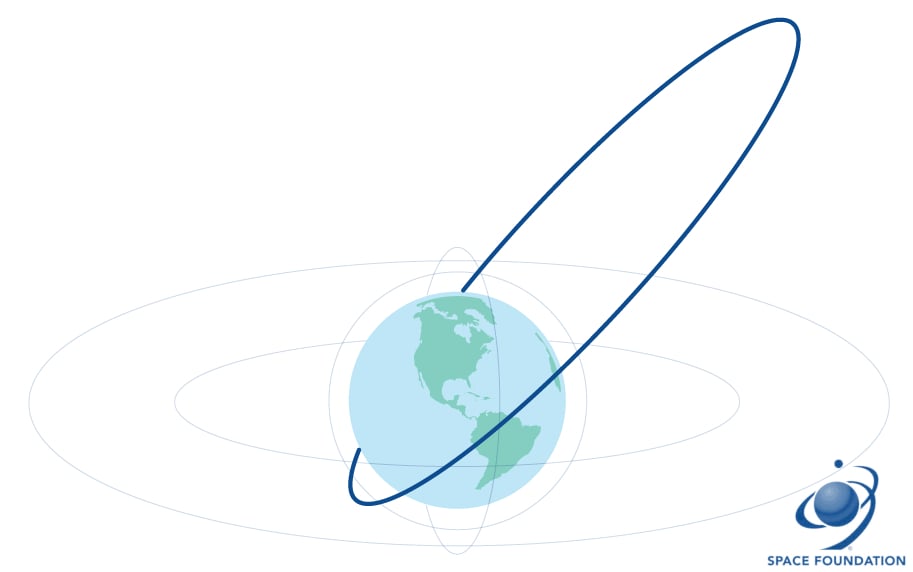Orbits
Types of Orbits
Written by: Space Foundation Editorial Team
There are several types of Earth orbit, and each offers certain advantages and capabilities.
Low Earth Orbit (LEO)
LEO is commonly used for communication and remote sensing satellite systems, as well as the International Space Station (ISS) and Hubble Space Telescope.
Medium Earth Orbit
MEO is commonly used for navigation systems, including the U.S. Global Positioning System (GPS).

A depiction of LEO and MEO. Credit: The Space Foundation
Geosynchronous Orbit (GSO) & Geostationary Orbit (GEO)
Objects in GSO have an orbital speed that matches the Earth’s rotation, yielding a consistent position over a single longitude. GEO is a kind of GSO. It matches the planet’s rotation, but GEO objects only orbit Earth’s equator, and from the ground perspective, they appear in a fixed position in the sky. GSO and GEO are used for telecommunications and Earth observation.

A depiction of GSO/GEO. Credit: The Space Foundation
Polar Orbit
Within 30 degrees of the Earth’s poles, the polar orbit is used for satellites providing reconnaissance, weather tracking, measuring atmospheric conditions, and long-term Earth observation.
Sun-Synchronous Orbit (SSO)
A type of polar orbit, SSO objects are synchronous with the sun, such that they pass over an Earth region at the same local time every day.

A depiction of a Polar Orbit/SSO. Credit: The Space Foundation
Highly Elliptical Orbit (HEO)
An HEO is oblong, with one end nearer the Earth and other more distant. Satellites in HEO are suited for communications, satellite radio, remote sensing and other applications.

A depiction of HEO. Credit: The Space Foundation


